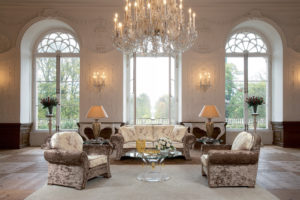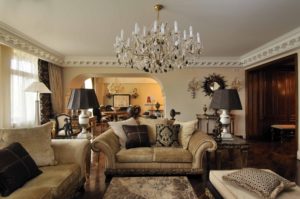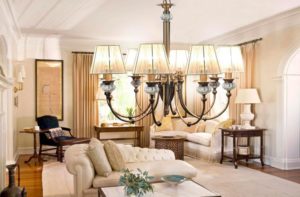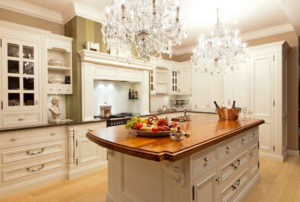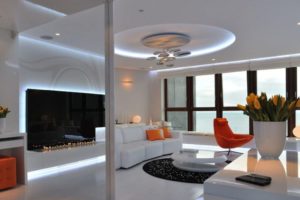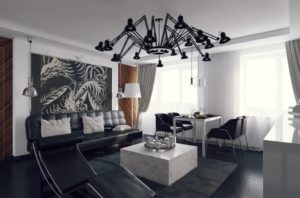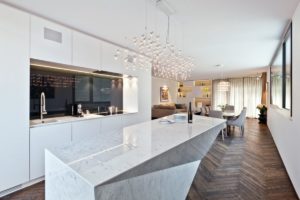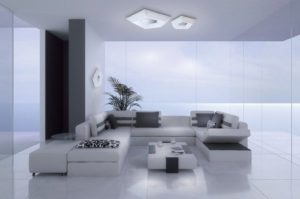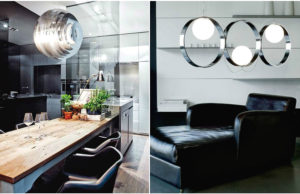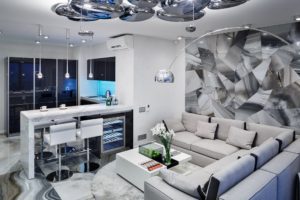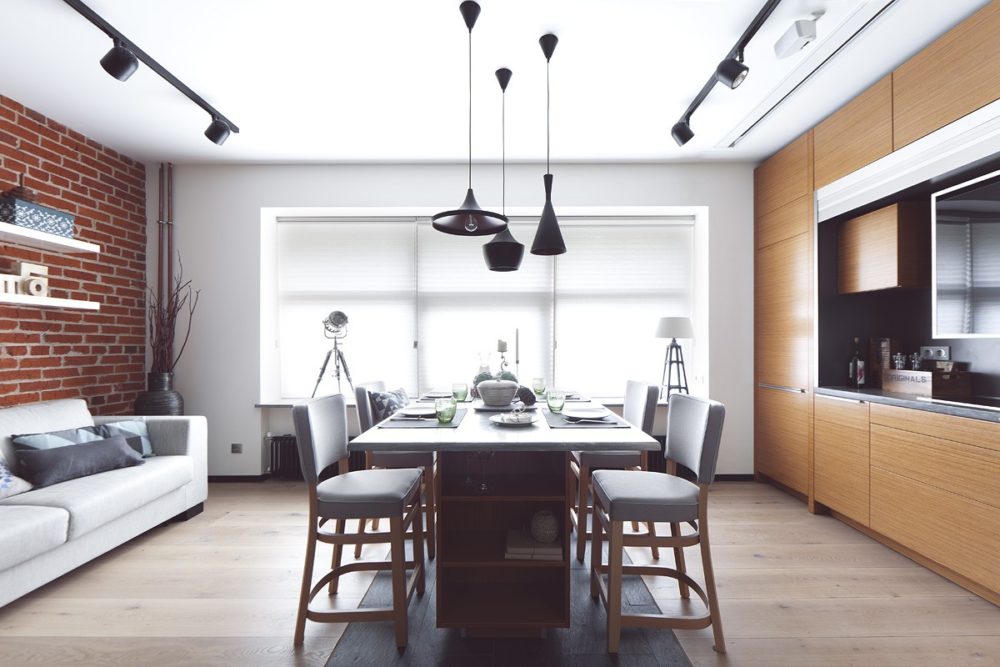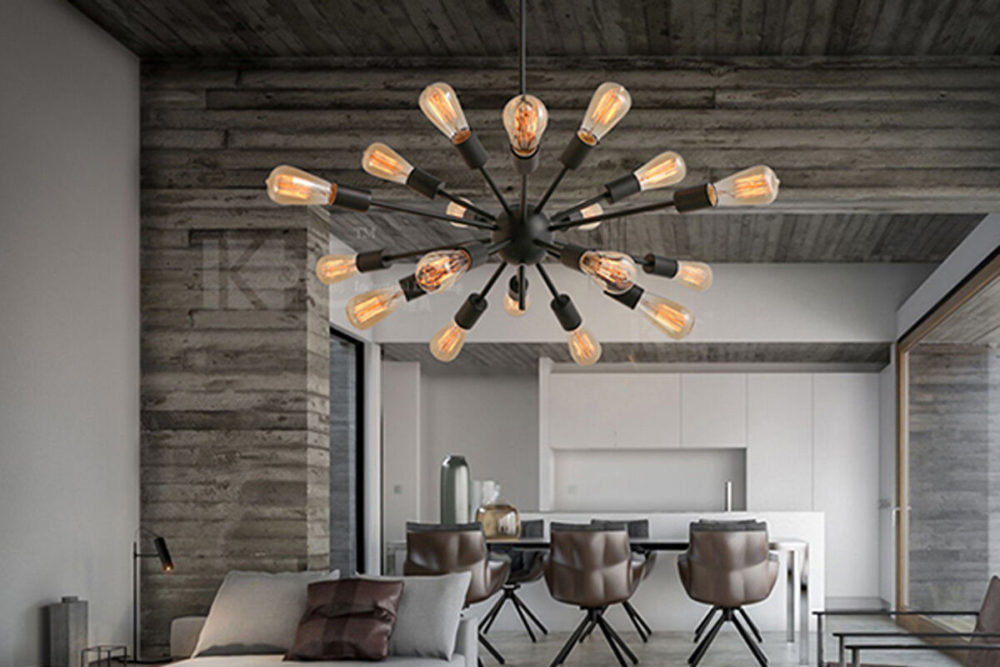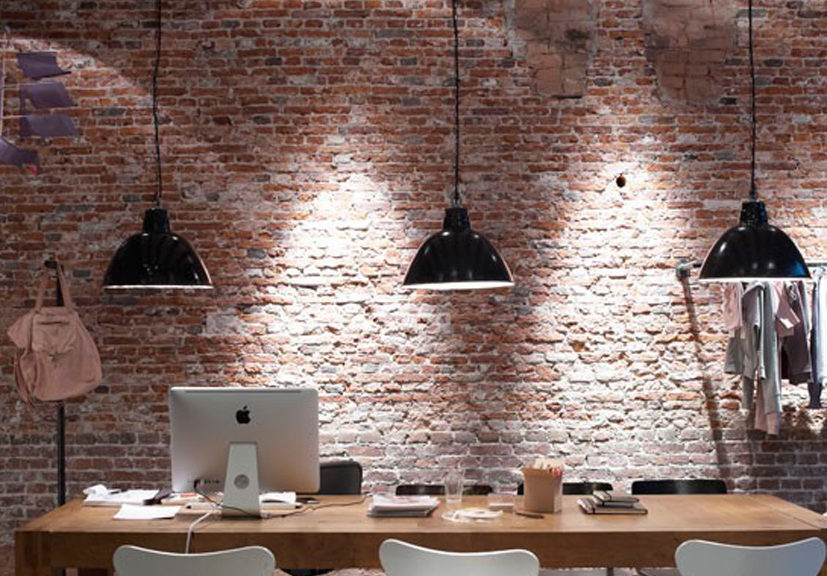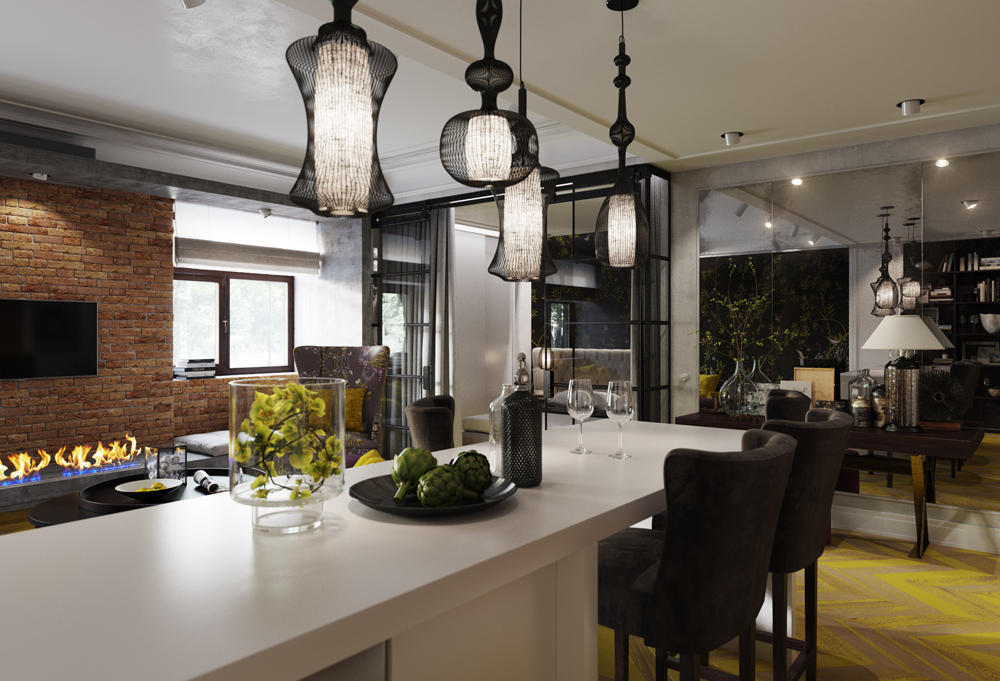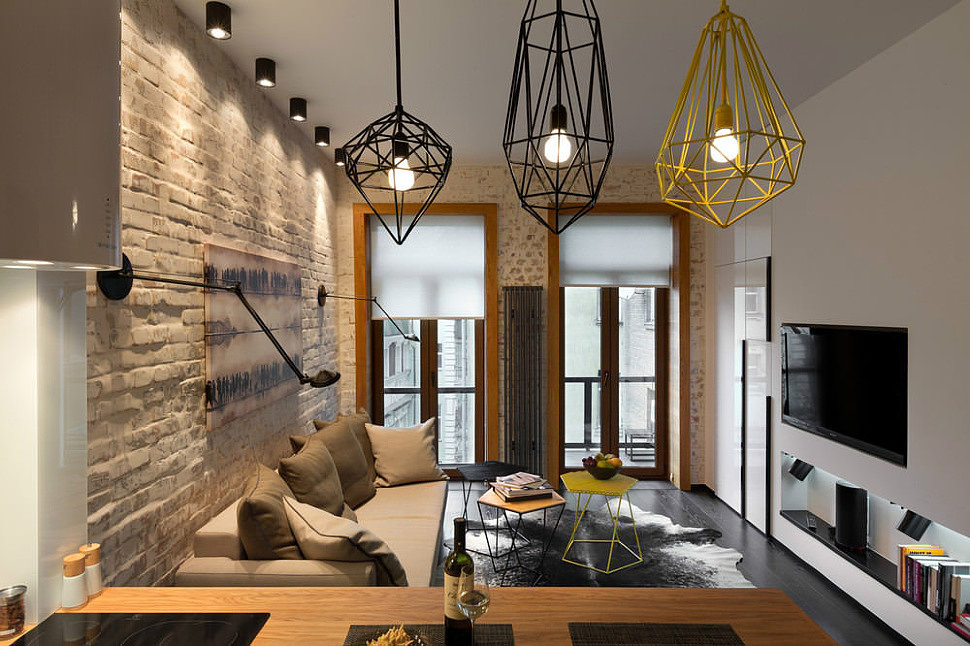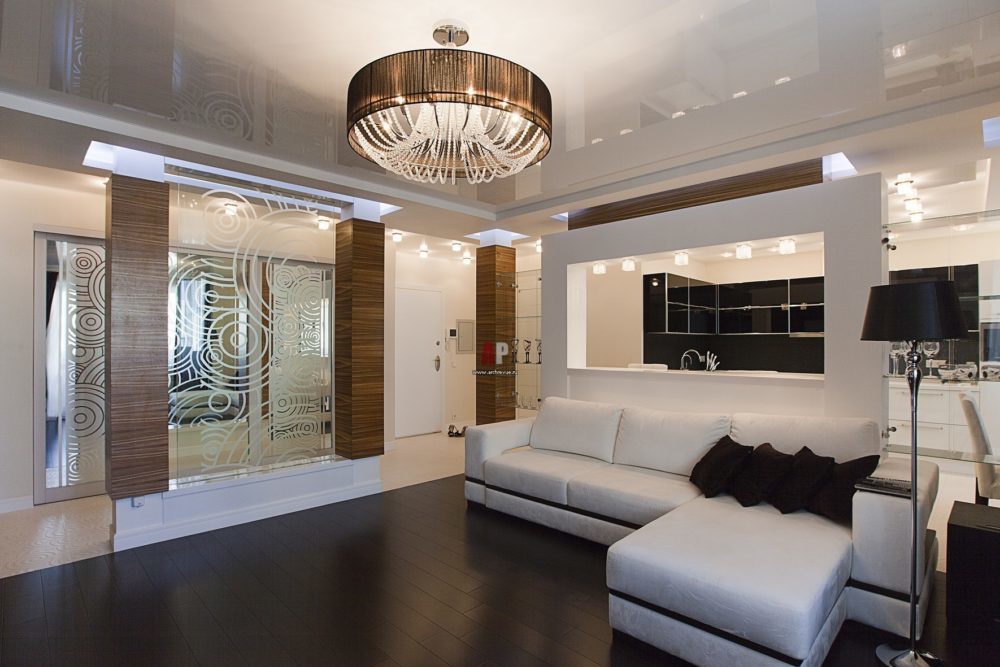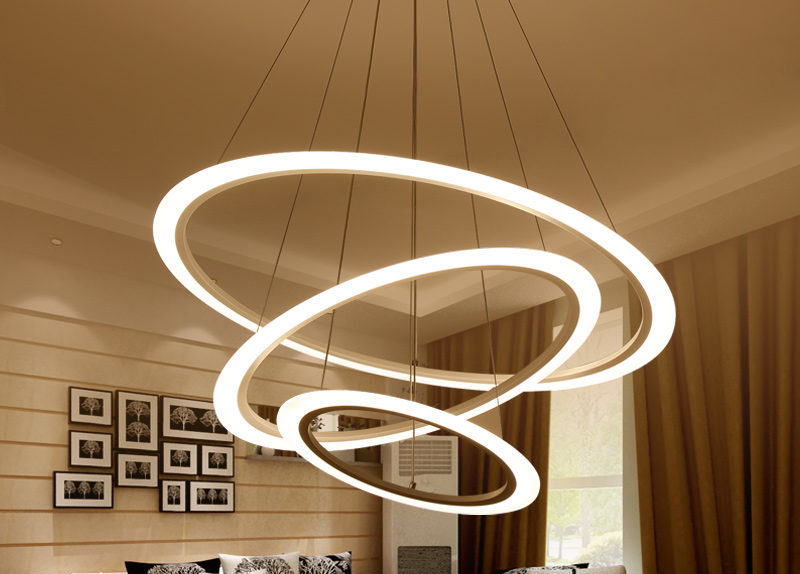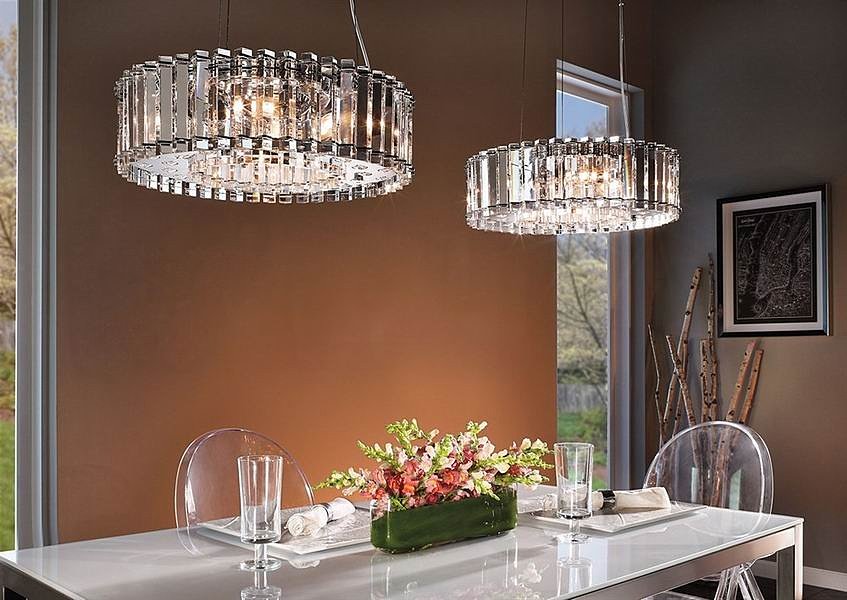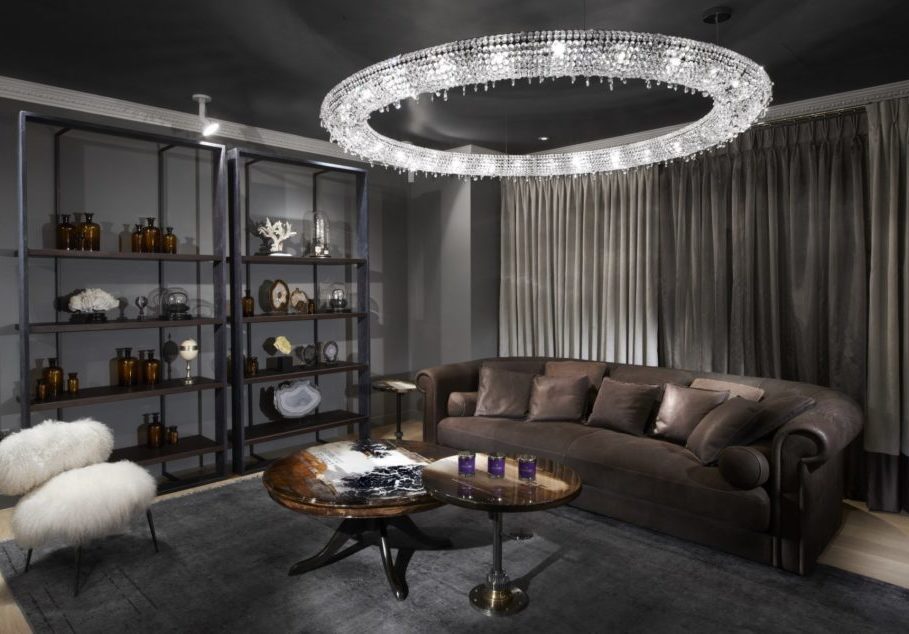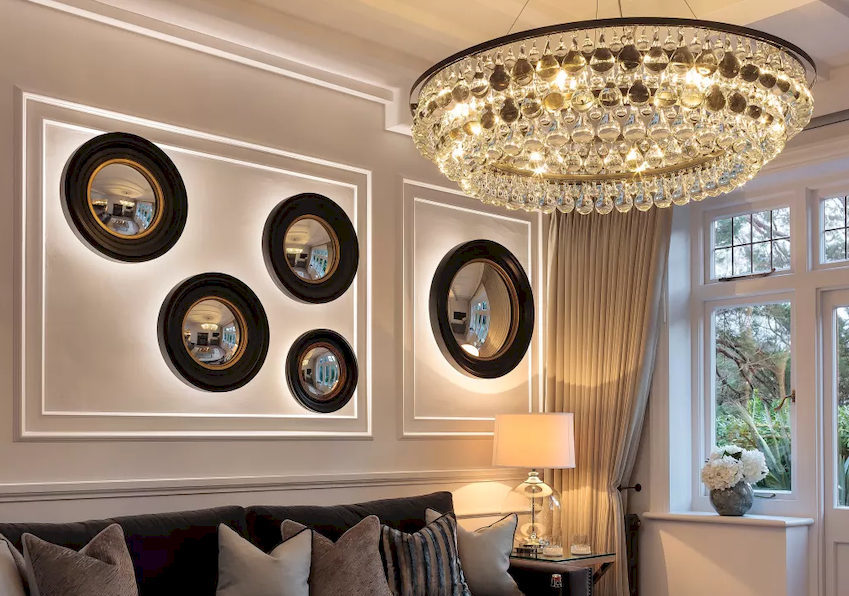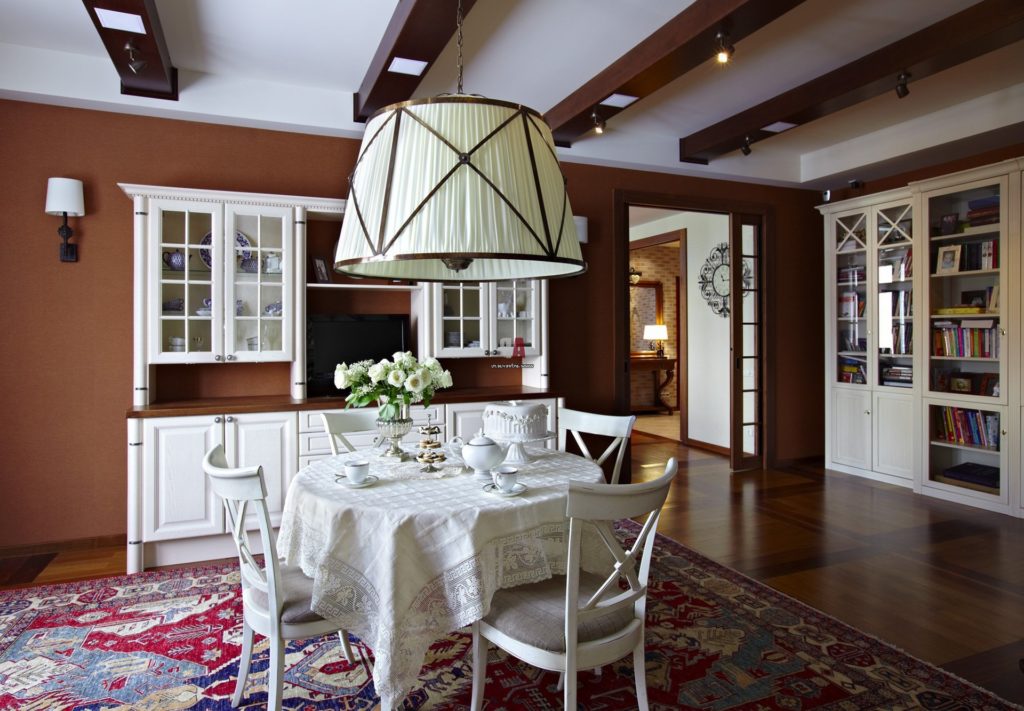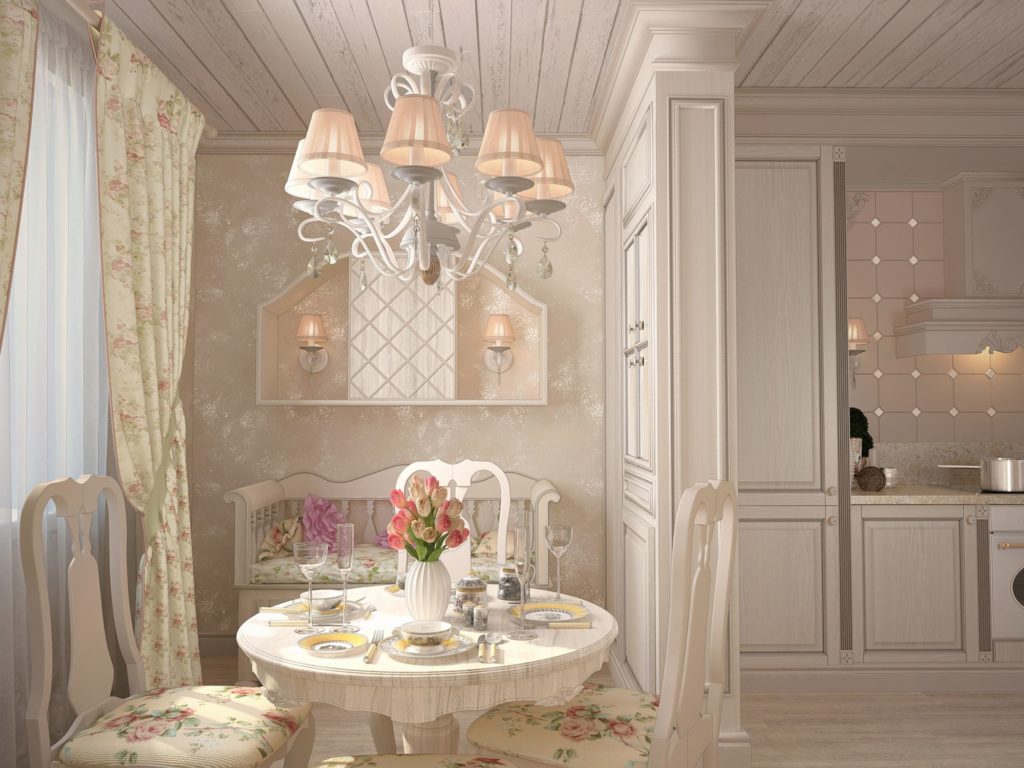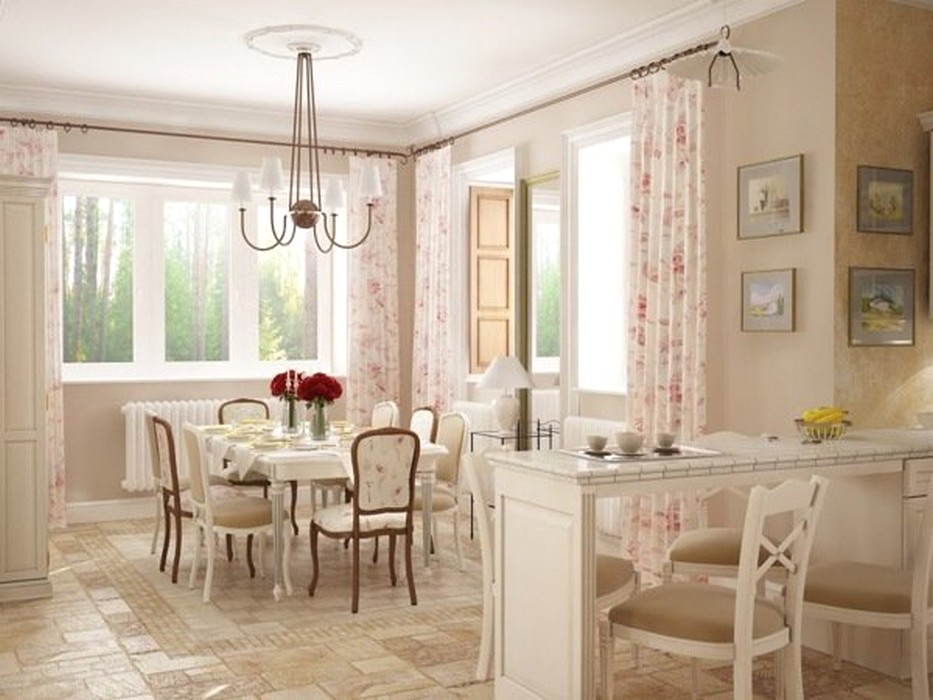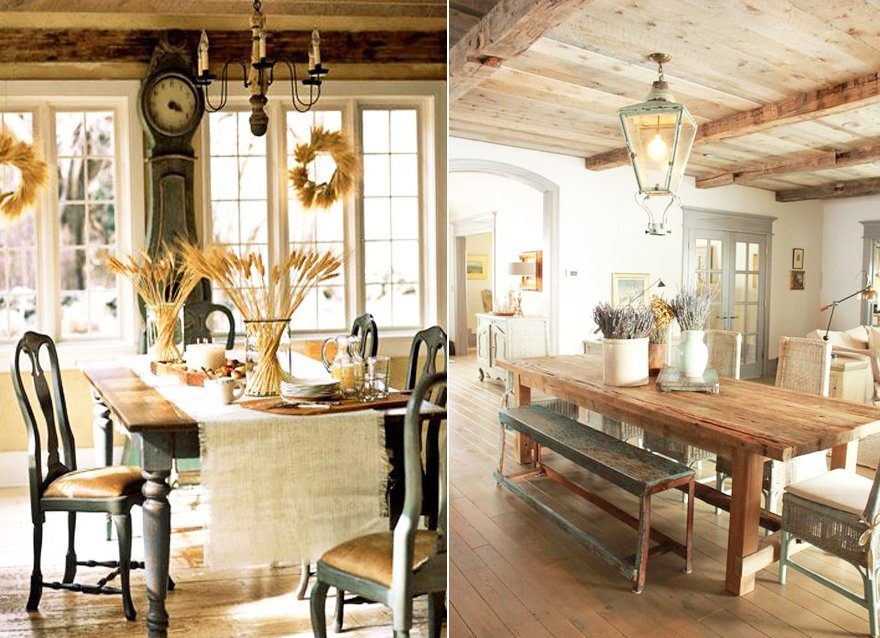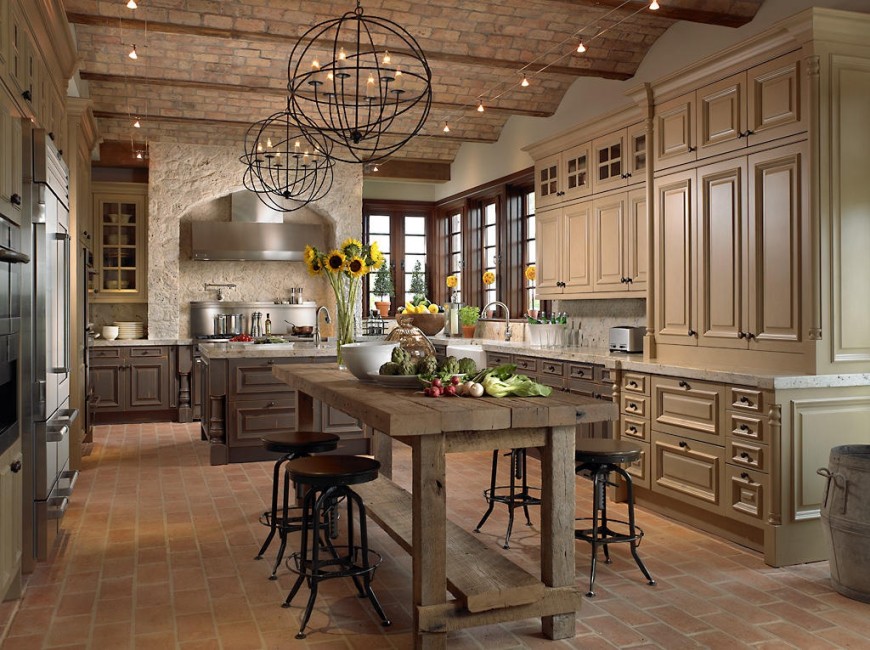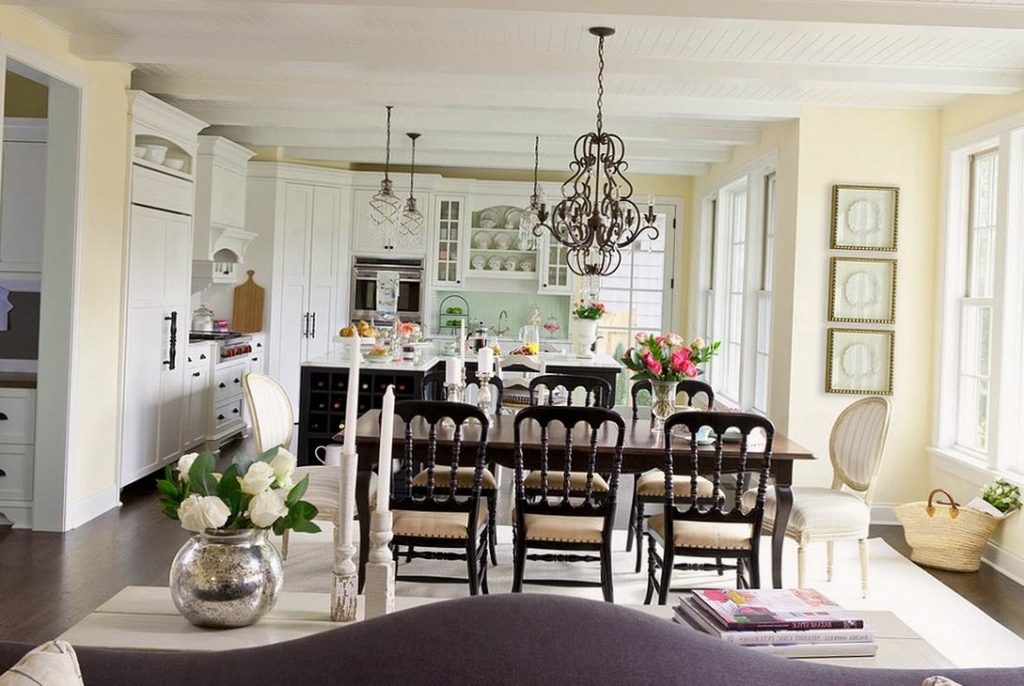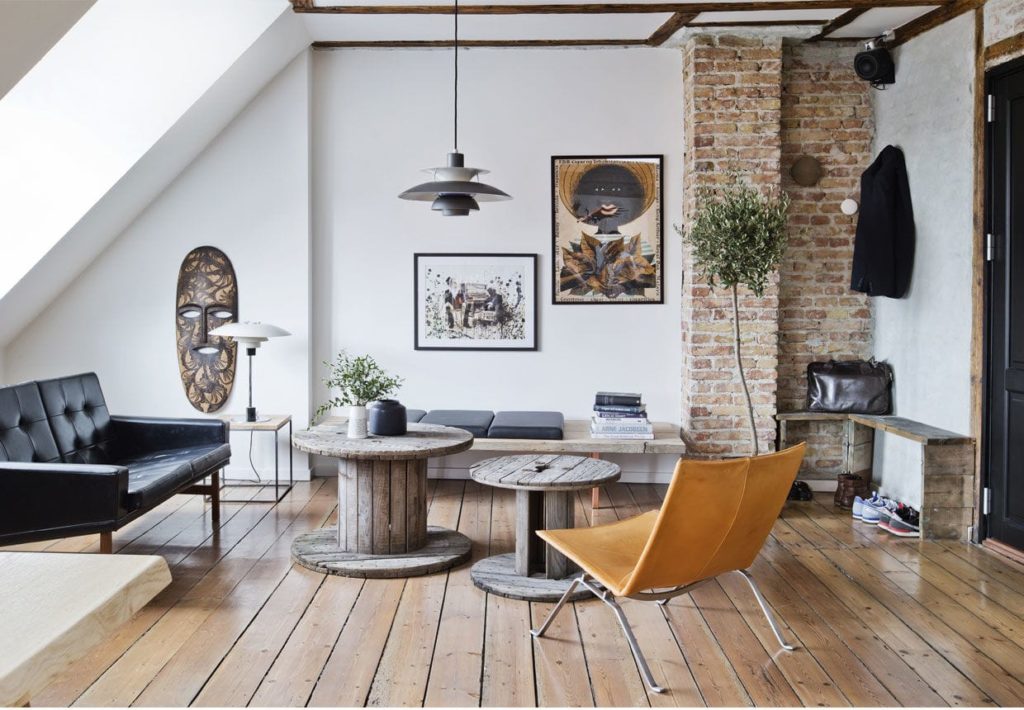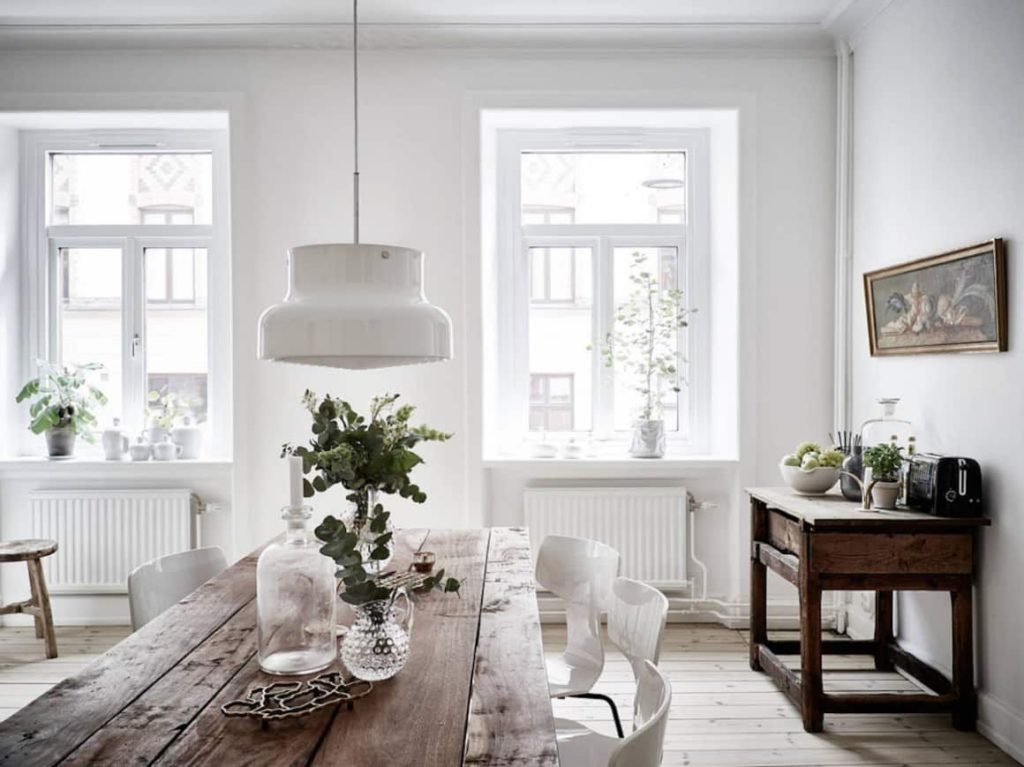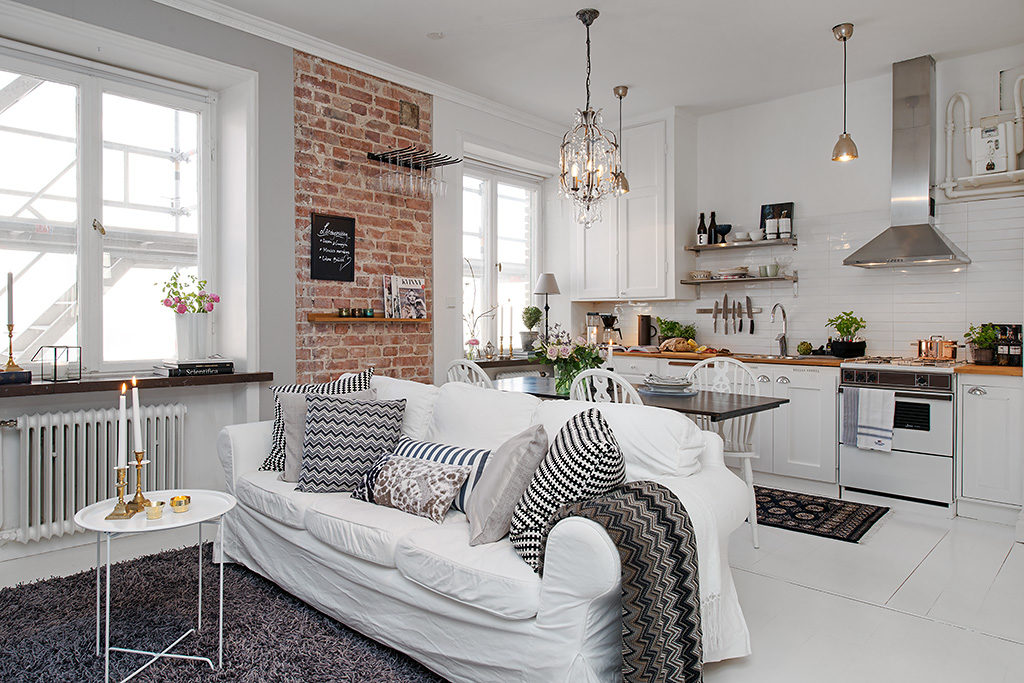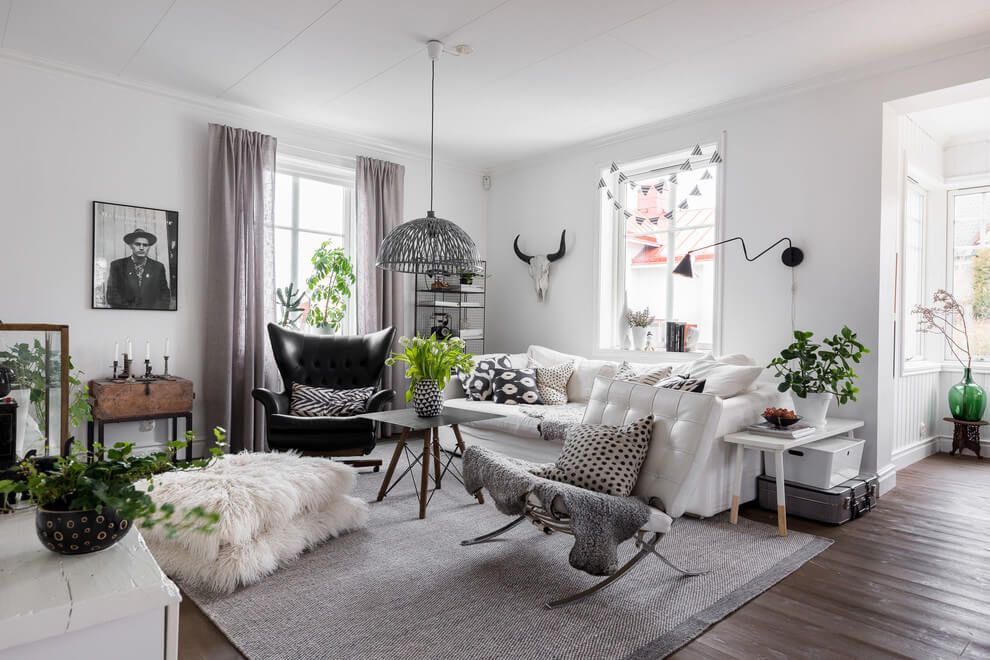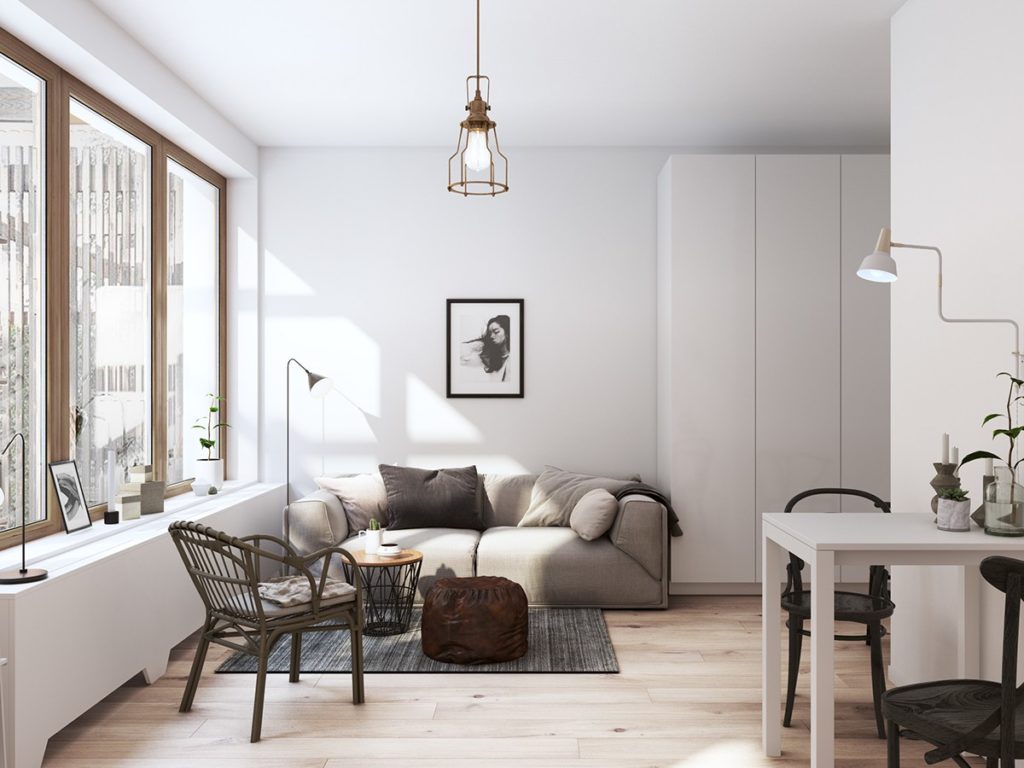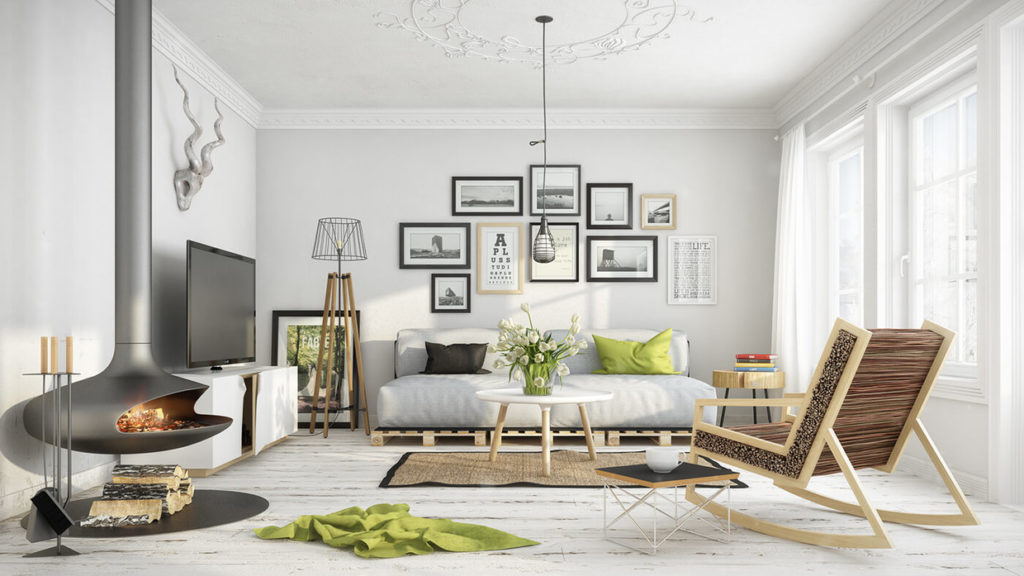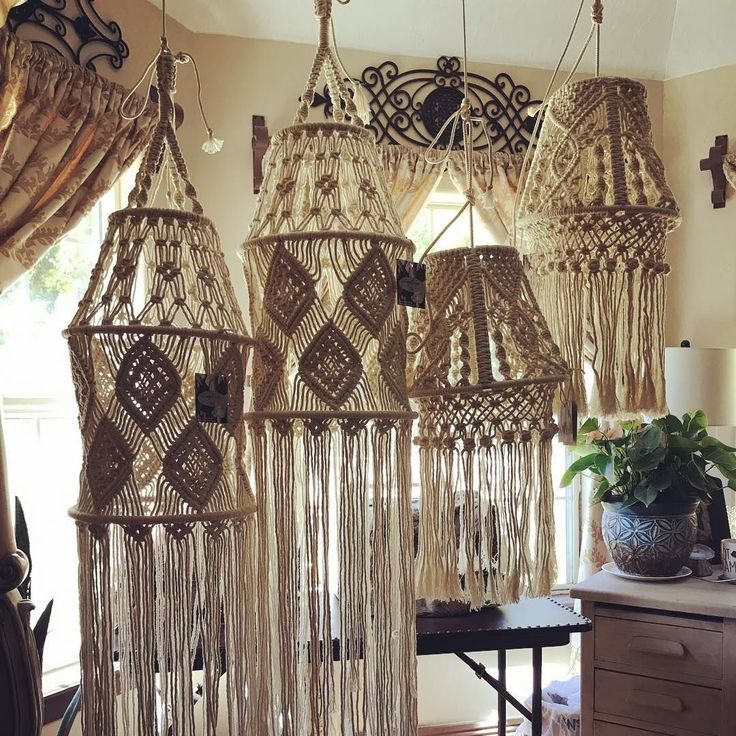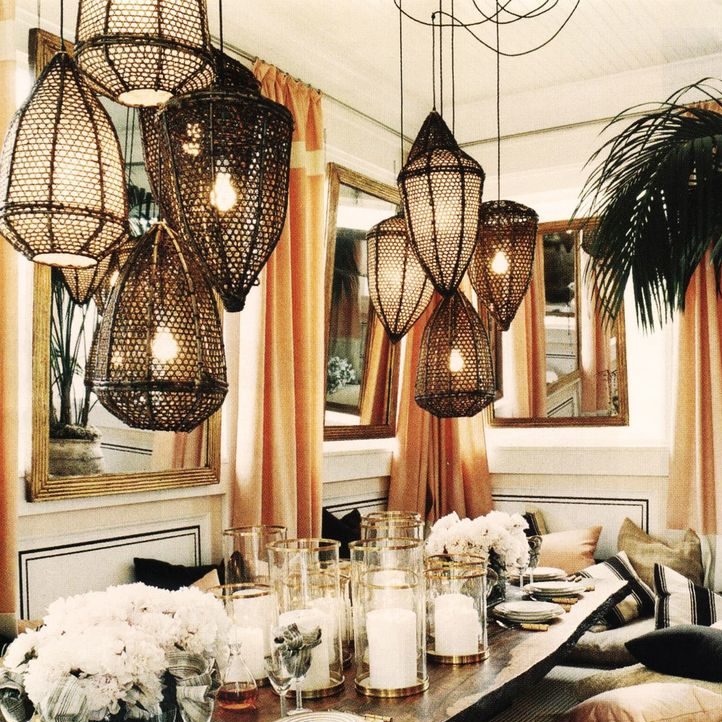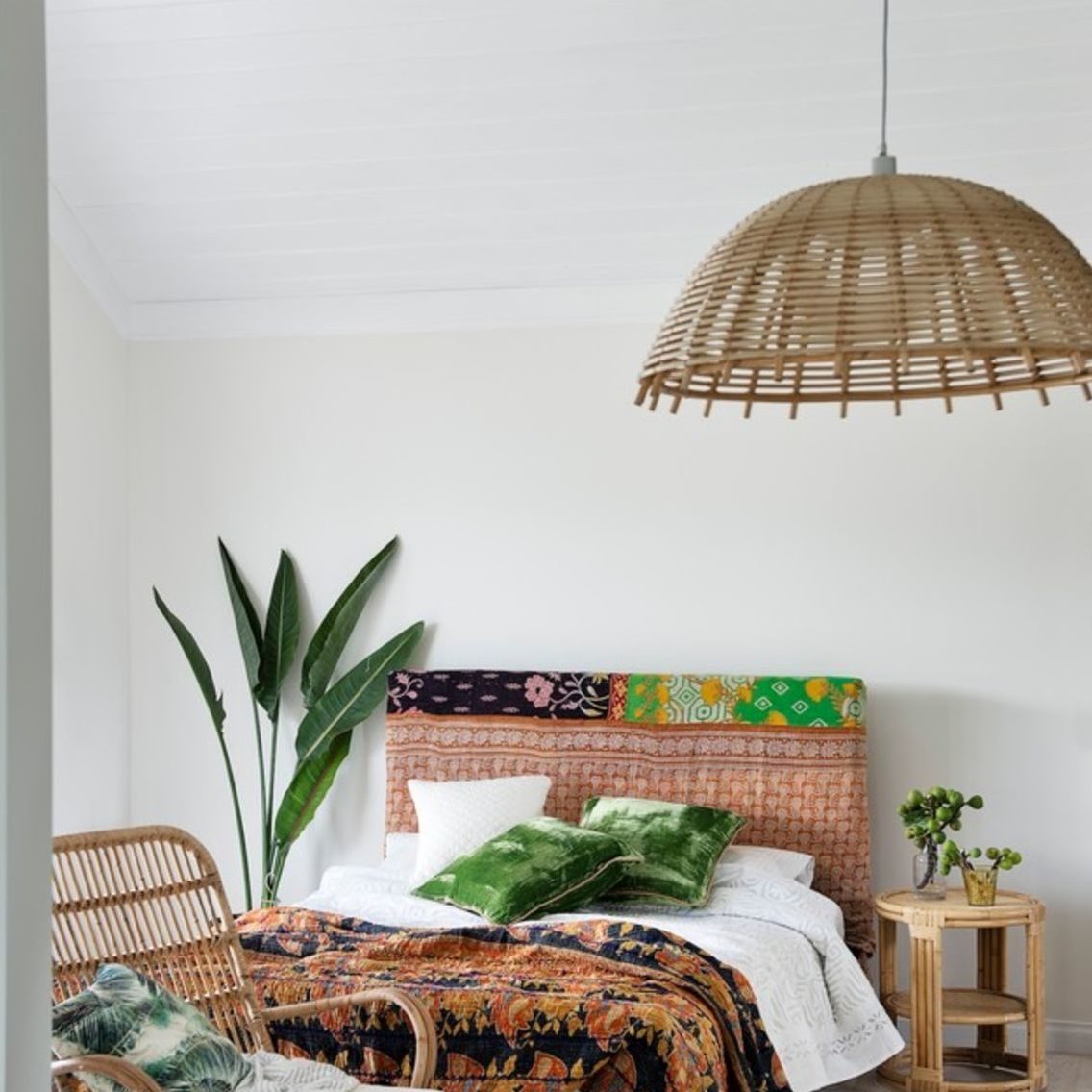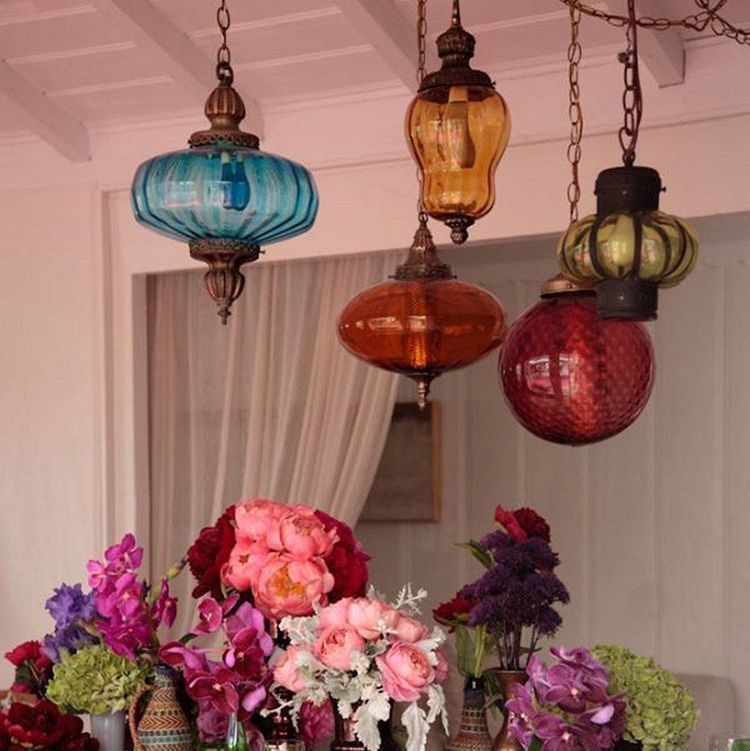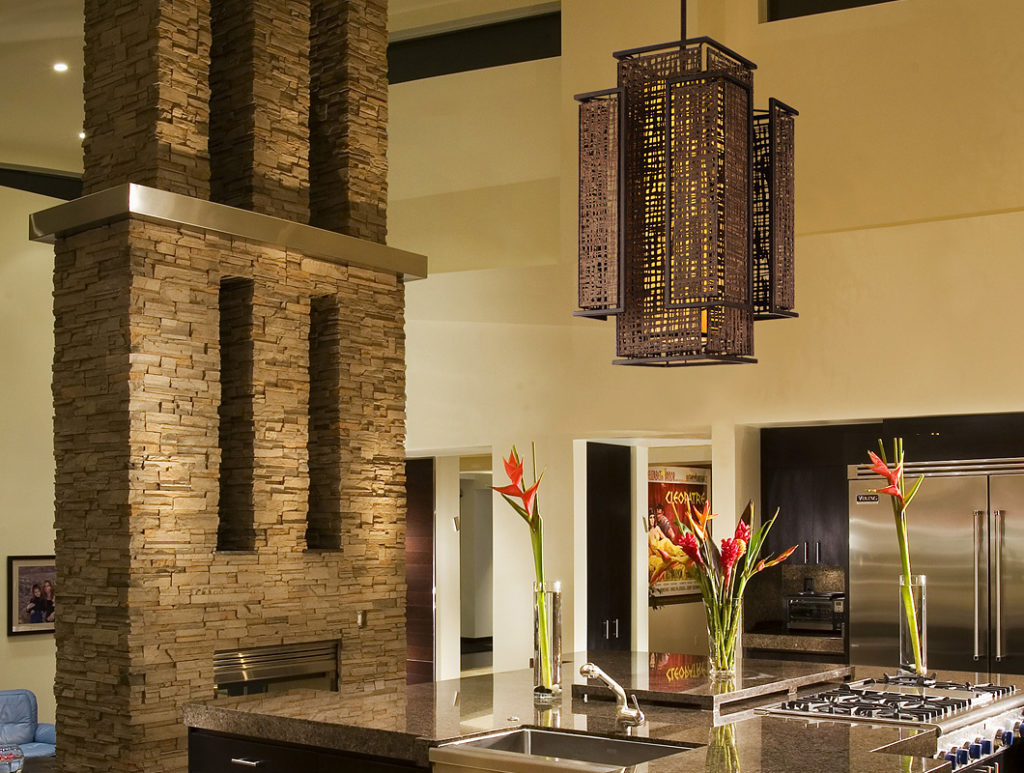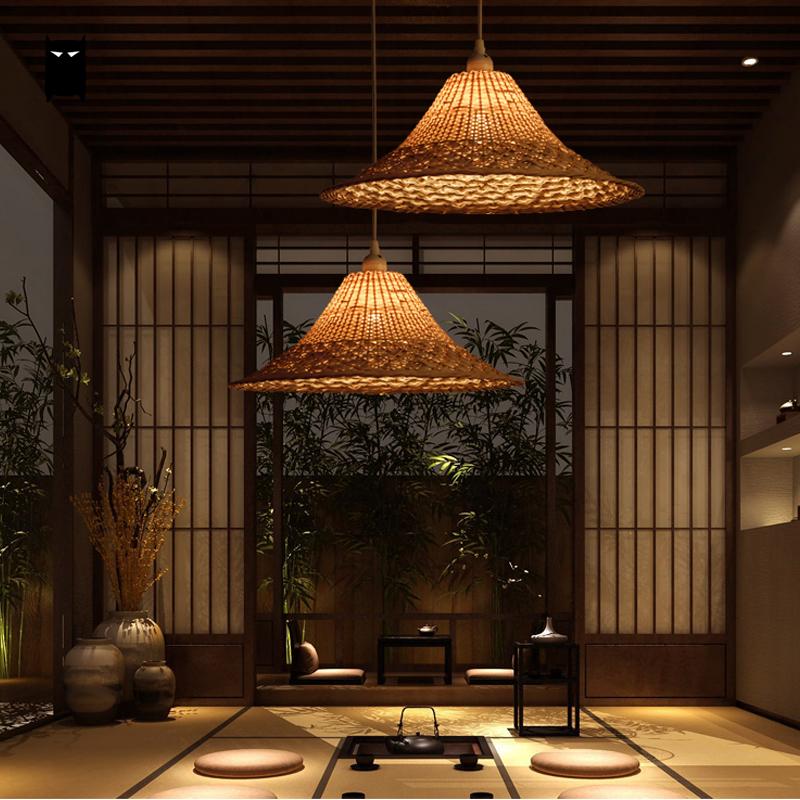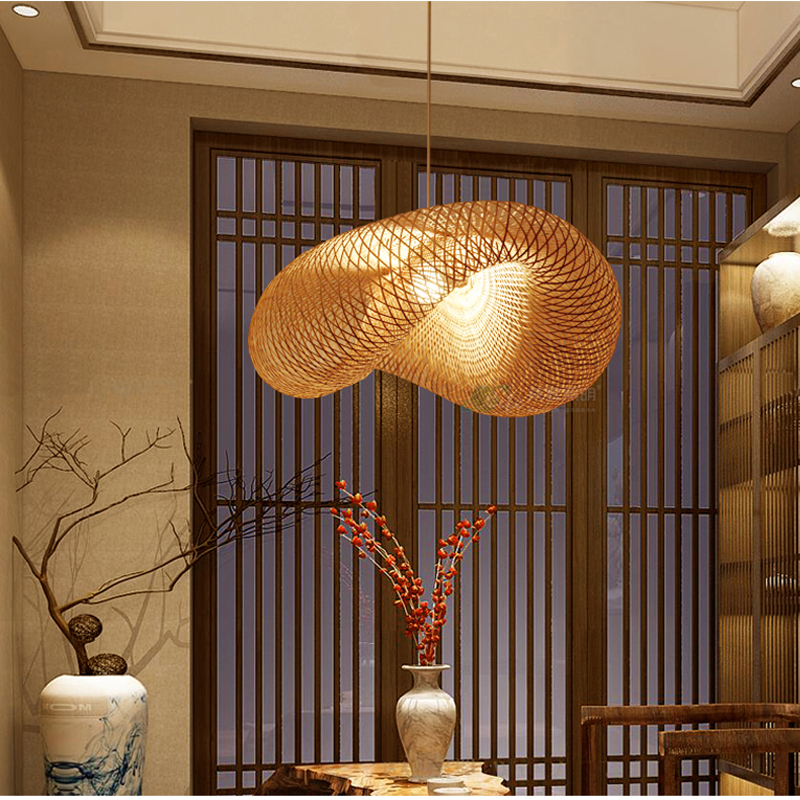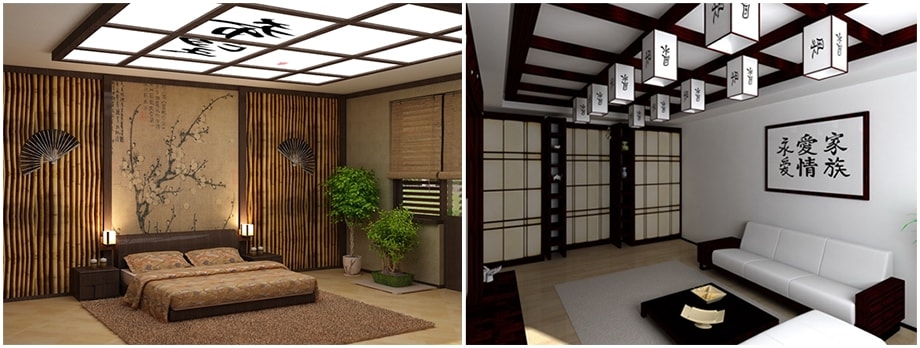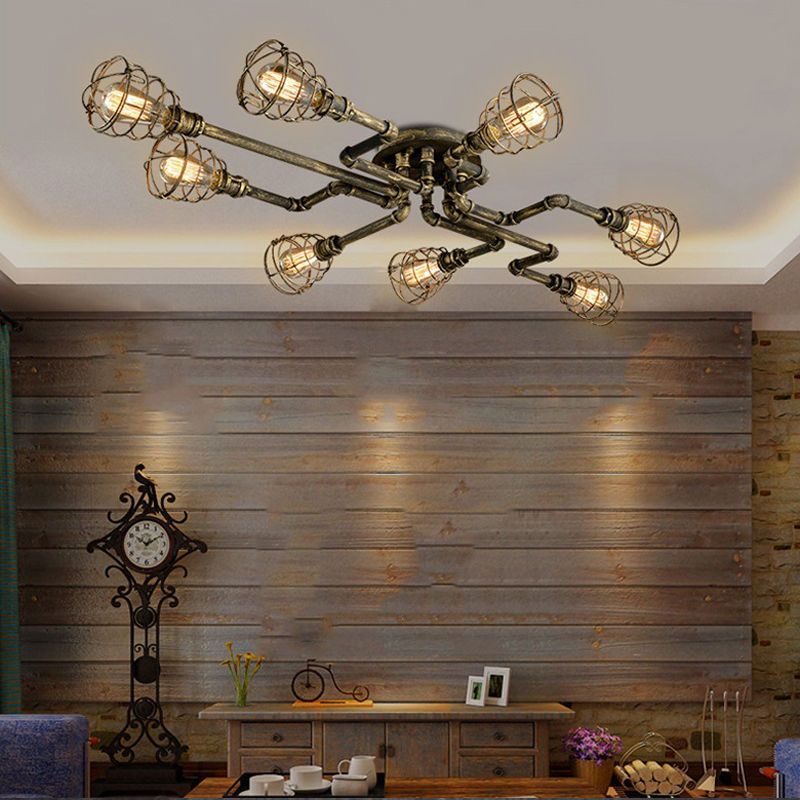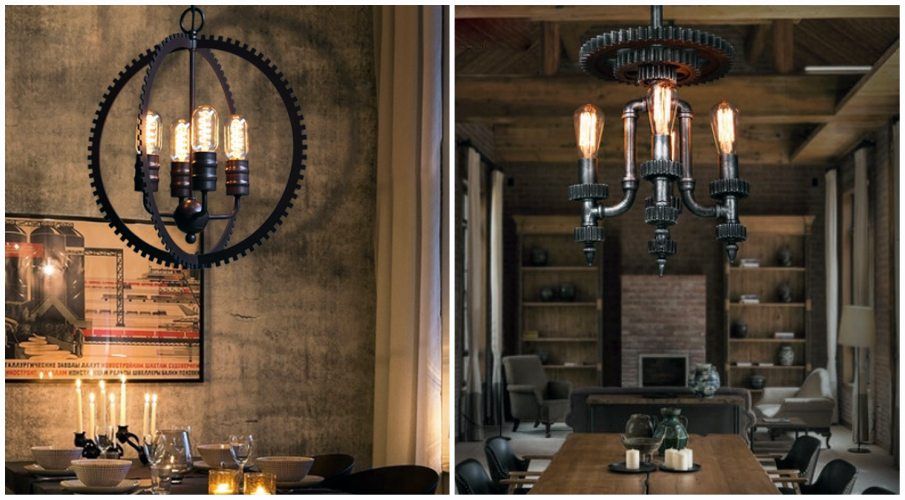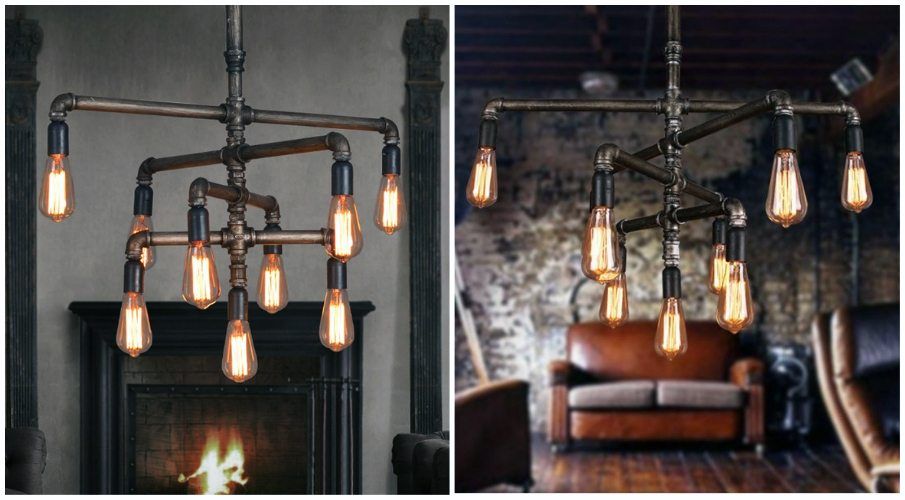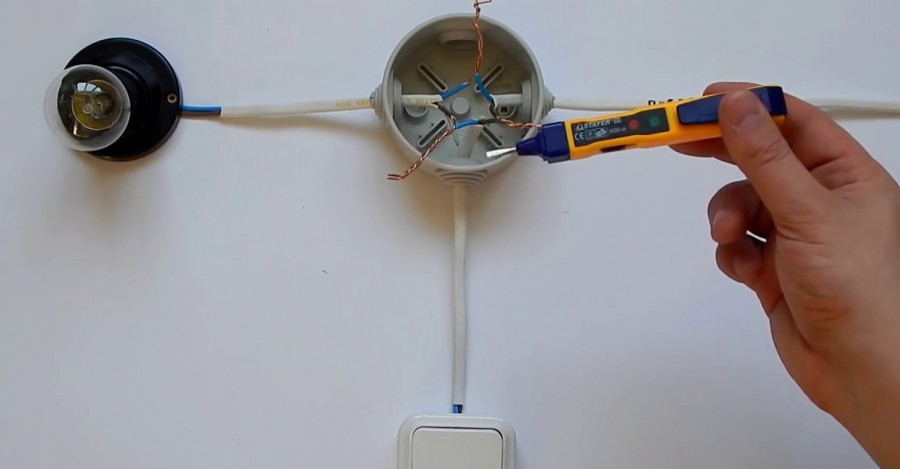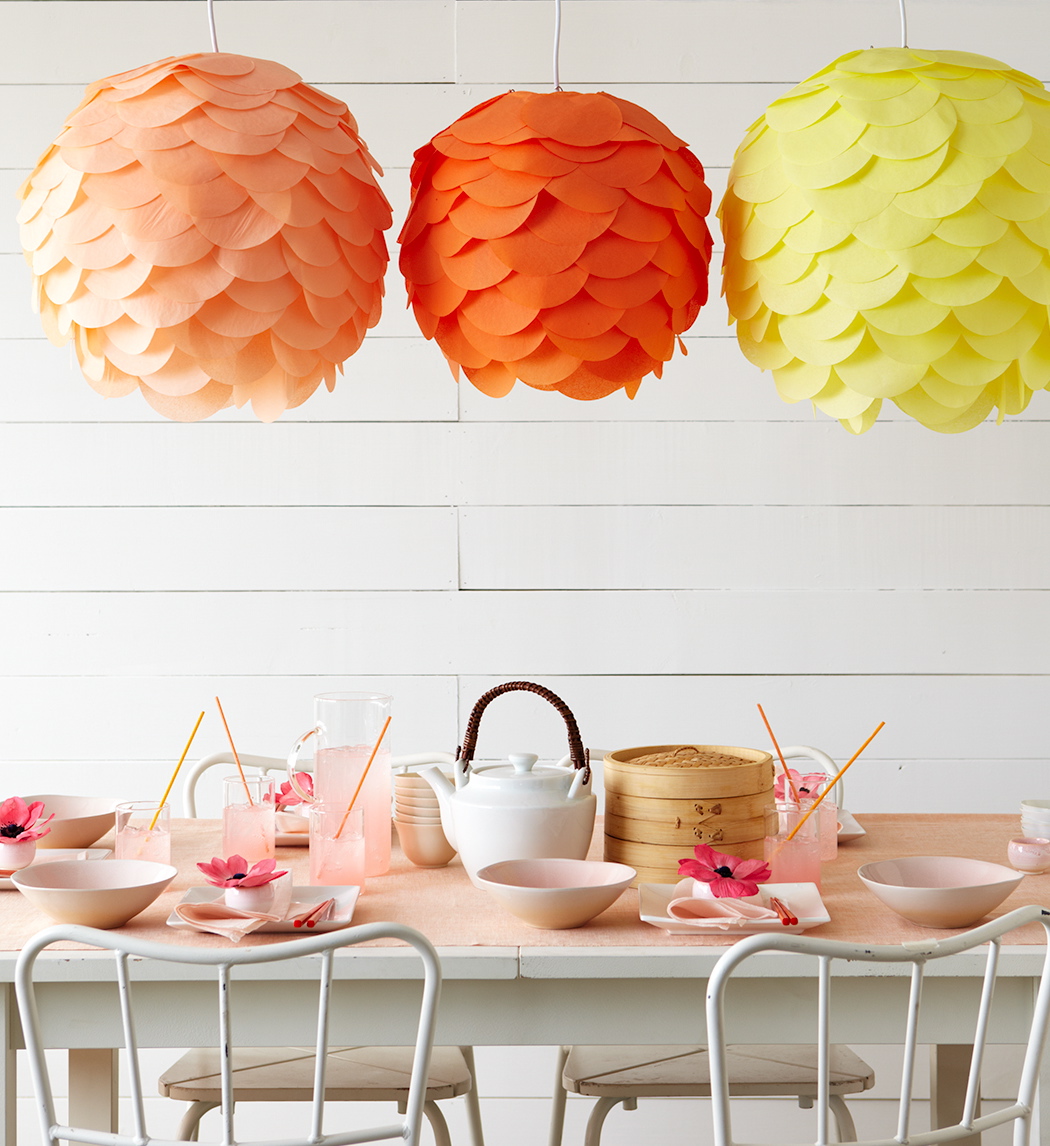How modern chandeliers combine in the interior
What should the ideal chandelier be like? Suitable room. Not too big and not too small. Moderately bright, illuminating all corners. Fits into the interior style. Unique enough to act as a separate design element and not too pretentious.
How to choose such a chandelier and how do modern lamps generally look in different interiors? Let's figure it out and look at the photo.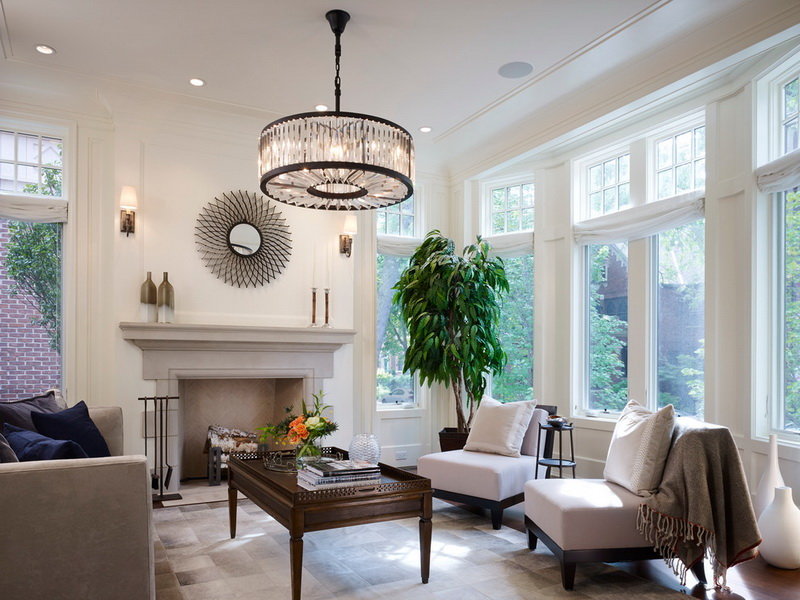
The content of the article
Choosing the right chandelier: the commandments of designers
When purchasing a lamp, consider the following nuances:
- Traditionally, there is one chandelier per room. But there are exceptions to this rule: if the room is divided into several functional zones, each can have its own light source. The main thing is not to forget - the smaller the room, the less pretentious these sources should be (in a small room, instead of a second chandelier, you can install floor lamps and sconces).
- The smaller the room, the simpler the chandelier - no ten horns or natural deer antlers. For very small rooms it is worth taking small ceiling lamps.
- There should be at least 2-2.3 meters from the bottom of the hanging chandelier to the floor. The exception is design projects with large lamps in the center of the composition and lampshades above the dining table.
- The diameter of the chandelier is calculated using the formula: D = (length of the room, m + width of the room, m) * 10 (the result is written in centimeters).
- Cold light is suitable for work areas; muted warm light is required for rest and relaxation areas.
- The chandelier must fit into the interior in color and design style.
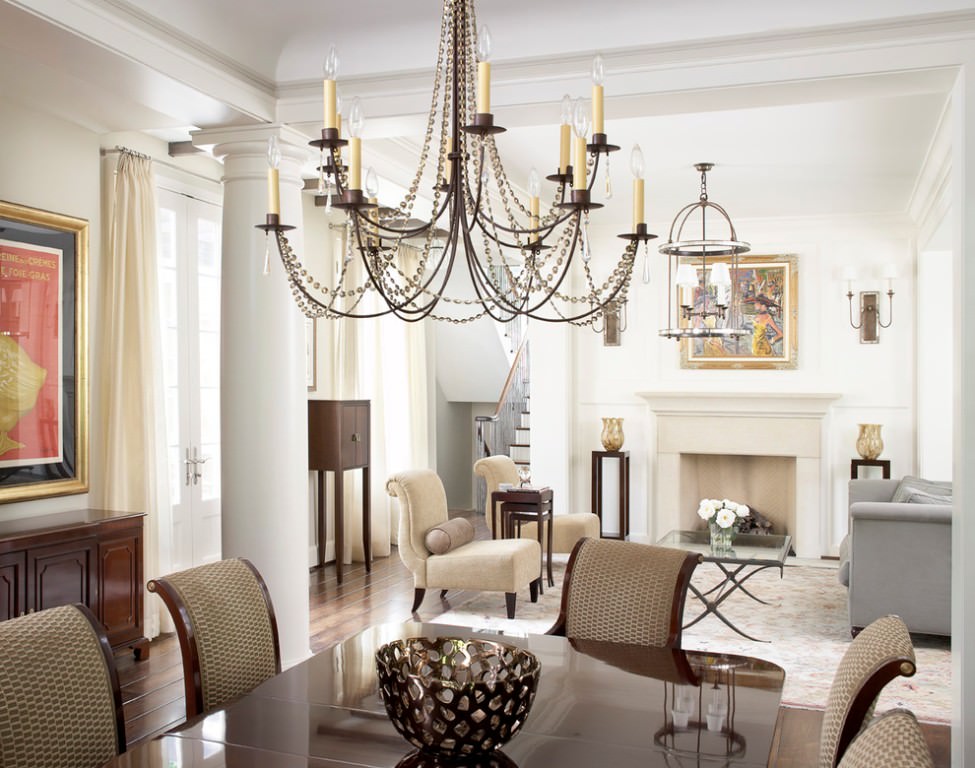
Modern chandeliers in different styles
The material of the chandelier depends on the overall style of the interior. Thus, paper lampshades are appropriate only in the Japanese style, and wooden ones - in boho. Let's figure out what the ideal chandelier should be for the most common modern interiors.
Classic
Lamps in this style are characterized by:
- severity of form, restraint and elegance - no asymmetry;
- lampshades made in the form of candlesticks;
- material – preferably metal, lampshades can be crystal or porcelain;
- Crystal pendants are widely used;
- limited color range: gold, silver, white, black, beige;
- In the living room, massive pendant lamps with several levels are traditionally installed.
High tech
The style itself is characterized by simple lines, chrome surfaces and minimalism throughout. The lamps “inherit” these features:
- there must be several light sources in the room, each illuminating its own area;
- lighting should be adjustable (dimmers), and ideally controlled from a remote control;
- asymmetrical interesting shapes;
- often a chandelier consists of several spotlights that can be directed in different directions;
- lamp material – metal;
- colors: white, grey, black, metallic.
Loft
Characteristic features of the style are large open spaces, functionality, bright lighting.In some ways it is similar to high-tech, but in high-tech space futuristic products received more attention, and loft is characterized by some roughness. Loft style lamps are different:
- originality, which is valued more than elegance;
- traditionally these are pendant lamps with several shades at different levels;
- a design in the form of a hoop with horns in a circle is also often found;
- The material of the lamp is metal, sometimes there are wooden inserts, in some cases there is no frame (the so-called “spider chandelier”, in which wires with light bulbs are attached to the ceiling);
- colors: black, bronze, metallic shades, chocolate, beige.
Modern
Art Nouveau is characterized by eclecticism and elegance. Smooth lines, rounded shapes, warm shades - you can wrap yourself in this style like a cozy blanket. At the same time, it can combine elements of classic and more modern loft or industrial style.
A loft-style chandelier is the rightful king of the room and the focus of design thought. As a rule, she:
- massive, catchy, attracting attention;
- strictly one per room, if more lighting is needed, then it can be supplemented with floor lamps and sconces;
- with simple lines and often asymmetrical design;
- decorated with interesting ornaments;
- often consists of several lampshades that can be directed to a specific area;
- there are interesting stained glass inserts made of multi-colored glass;
- materials - plastic and metal, lampshades can be glass, porcelain, forged and even fabric;
- colors - black, white, beige, rich shades of scarlet, blue, green - in fact, there is only one rule: the colors of the chandelier should be found in the interior (on the walls, in textiles, floor decorations).
Provence
Provence (like country and eco-style) gravitates towards light shades, simplicity and natural materials. Down with plastic and chromed metal, long live textiles and forging!
Chandeliers in the Provence style are characterized by:
- translucent lampshades and shades;
- natural materials - wood, ceramics, metal (and their combinations);
- pastel shades;
- plant motifs (frame in the shape of a leaf or vine, ceramic lampshades painted with floral patterns).
Scandinavian style
The colors of Scandinavian interiors are white and blue. As in Provence, it uses mainly natural materials, and welcomes bright accents and details - textile and metal inserts. A good solution would be handmade.
Chandeliers have a number of features:
- monochrome – different materials can be combined in a lamp, but the shade must be the same;
- natural materials – metal, textiles, wood, ceramics, clay;
- natural shades - white, black, beige, wood;
- simple lines and shapes;
- ease of care.
Boho
Flashy, bright, attention-grabbing, specific - this is how boho is perceived. A combination of incongruous things, bold color schemes, a mixture of materials, a lot of kitsch - all the features of the style are “inherited” by the lamps:
- strictly warm spectrum light bulbs;
- a tribute to medieval motifs - forged chandeliers with horns in the form of candlesticks will not look so good in any interior;
- multi-level, massive, large dimensions;
- crystal elements and pendants are used;
- paper, papier-mâché, macrame, textiles - boho lamps are “omnivorous”, often lampshades and chandeliers can be made at home, the main thing is to find a suitable frame;
- materials and colors are limited only by your imagination and the color scheme of the interior.
Japanese style
Minimalism, modesty, reasonable limitation, harmony and naturalness - the Japanese interior style “rests” on these elephants. Chandeliers should not attract undue attention and should not “stand out” from the color scheme of the room. Features of lamps:
- simple geometric shapes - squares, ovals, rectangles;
- monochromatic – the color of the lampshade can be any, but the “green-red” combination cannot be found in a Japanese chandelier;
- the ornament is rare, most often it is an intricate hieroglyphic inscription;
- materials - glass, rice paper, wood, linen - combine well with each other, but you should not combine more than two materials in one device.
Steampunk
Steam engines, cogs, wheels, bent pipes, bronze are the hallmarks of steampunk. The style itself combines the Elizabethan era and the dream of a steam paradise for humanity. The main disadvantage of lamps of this style is that they will most likely be expensive, because truly interesting things are most often made in private workshops.
Features of lamps:
- strictly incandescent lamps are used;
- chandeliers with multiple arms;
- the use of unusual shapes (the most famous steampunk lamp is a water pipe with horns “attached” to it);
- material – exclusively metal;
- colors: all shades of chocolate and black.
Can different styles use the same lamps? Absolutely yes. A metal lamp with a textile lampshade will be appropriate in eco, Scandinavian, and Provence style.This avant-garde, slightly futuristic fan lamp was “born” in steampunk, but will look great in loft and industrial settings. How to choose the perfect lamp for your concept room? First of all, focus on your taste, the size of the room and its color scheme.

